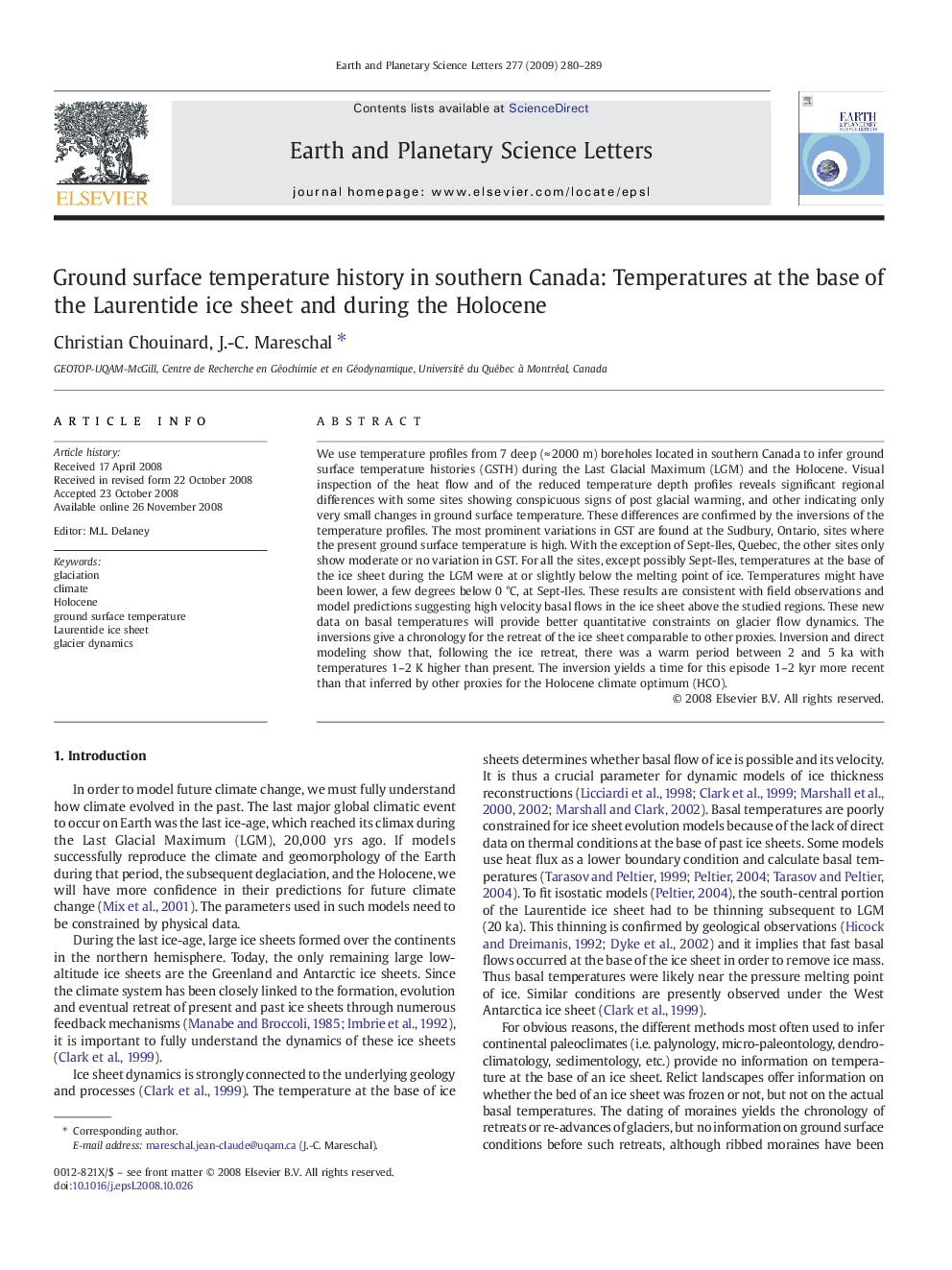| Article ID | Journal | Published Year | Pages | File Type |
|---|---|---|---|---|
| 4679547 | Earth and Planetary Science Letters | 2009 | 10 Pages |
We use temperature profiles from 7 deep (≈ 2000 m) boreholes located in southern Canada to infer ground surface temperature histories (GSTH) during the Last Glacial Maximum (LGM) and the Holocene. Visual inspection of the heat flow and of the reduced temperature depth profiles reveals significant regional differences with some sites showing conspicuous signs of post glacial warming, and other indicating only very small changes in ground surface temperature. These differences are confirmed by the inversions of the temperature profiles. The most prominent variations in GST are found at the Sudbury, Ontario, sites where the present ground surface temperature is high. With the exception of Sept-Iles, Quebec, the other sites only show moderate or no variation in GST. For all the sites, except possibly Sept-Iles, temperatures at the base of the ice sheet during the LGM were at or slightly below the melting point of ice. Temperatures might have been lower, a few degrees below 0 °C, at Sept-Iles. These results are consistent with field observations and model predictions suggesting high velocity basal flows in the ice sheet above the studied regions. These new data on basal temperatures will provide better quantitative constraints on glacier flow dynamics. The inversions give a chronology for the retreat of the ice sheet comparable to other proxies. Inversion and direct modeling show that, following the ice retreat, there was a warm period between 2 and 5 ka with temperatures 1–2 K higher than present. The inversion yields a time for this episode 1–2 kyr more recent than that inferred by other proxies for the Holocene climate optimum (HCO).
